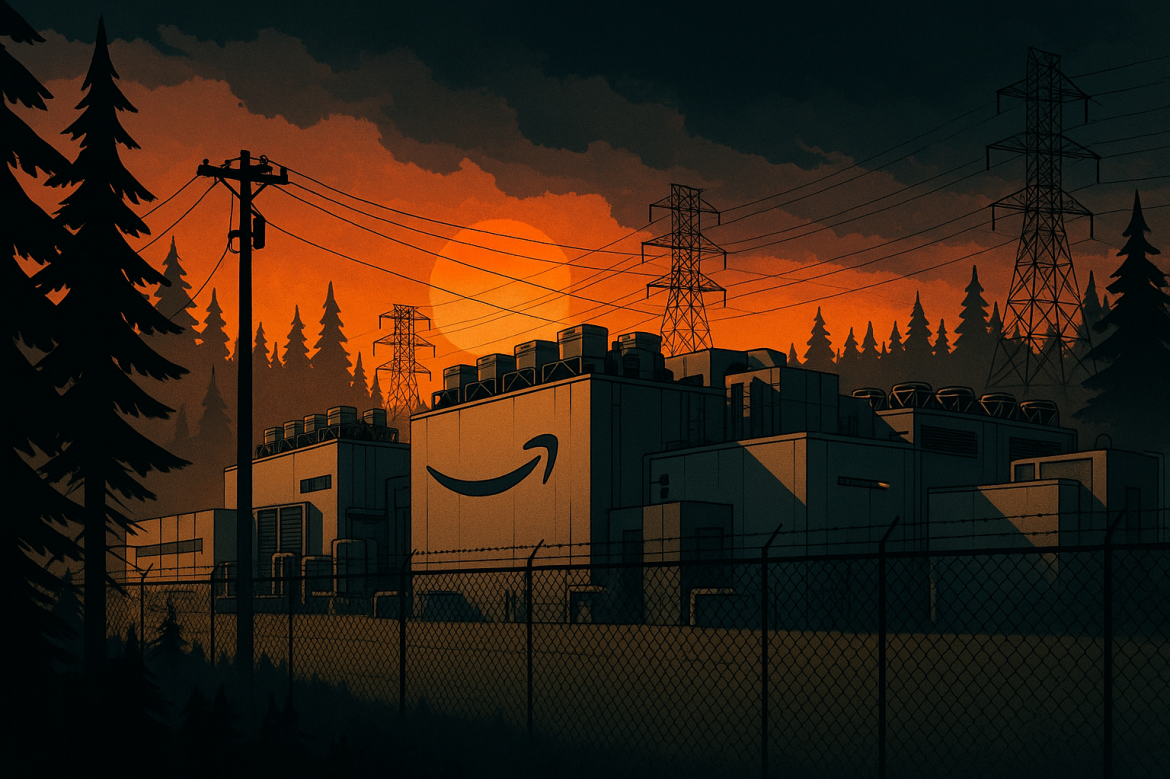
Amazon’s power struggle in Oregon reveals the dark side of America’s AI boom
Amazon.com Inc. has accused PacifiCorp, a utility owned by Berkshire Hathaway Inc., of failing to deliver enough electricity to support four new data centres in Oregon.
The complaint, filed with the Public Utility Commission of Oregon, exposes an emerging fault line in America’s race to dominate artificial intelligence: a growing mismatch between technological ambition and energy capacity.
In its filing, according to a Bloomberg report, Amazon said PacifiCorp breached a 2021 agreement to supply power for its upcoming data campuses.
The company claims the utility provided insufficient power to one facility, none to a second, and has not finalised contracts for two more.
The dispute highlights how even the world’s largest corporations are now vulnerable to the limits of an ageing electrical grid.
The rising cost of powering the cloud
Amazon’s data centres form the backbone of its cloud computing operations, which support everything from online retail and mobile apps to streaming and AI workloads.
These facilities require a constant, high-intensity energy supply to function without interruption.
The company alleges, states Bloomberg, that PacifiCorp’s failure to deliver promised power has disrupted development timelines and jeopardised the expansion of its cloud infrastructure in the Pacific Northwest.
Such facilities are not just critical to Amazon Web Services but also to the broader digital economy, where AI models, financial systems, and government platforms increasingly depend on continuous cloud access.
Regulators will now decide whether PacifiCorp violated contractual obligations or failed to comply with Oregon’s energy-delivery standards.
A grid under pressure
The case comes as the United States faces an energy challenge unseen in decades. As per Bloomberg, electricity demand from AI computing alone could more than double by 2035, driven by the explosive growth of data-hungry models.
President Donald Trump has placed AI development at the centre of his administration’s economic strategy, urging faster approvals for data centres and related energy projects.
Yet the same growth is exposing the fragility of the existing power grid, which was not built to sustain the relentless appetite of cloud infrastructure.
Oregon, long seen as a hub for technology investment due to its cool climate and renewable-energy mix, now stands at the heart of this tension.
Its utilities must meet rising industrial demand while maintaining commitments to residential users and environmental targets.
Every new data centre requires hundreds of megawatts of power, placing strain on both local networks and long-term sustainability goals.
When innovation outpaces infrastructure
The Amazon-PacifiCorp dispute is not just a contractual clash. It is a warning signal about the speed at which technology is outpacing the physical systems that sustain it.
The world’s most advanced companies are building AI capacity faster than power networks can adapt, creating a modern paradox: innovation constrained by electricity.
The Public Utility Commission of Oregon’s review could influence how utilities negotiate with major technology clients in the future.
A ruling in Amazon’s favour may force power providers nationwide to rethink long-term energy planning, grid upgrades, and renewable integration strategies to meet data-centre demand.
For now, the silence from both Amazon and PacifiCorp reflects a larger uncertainty across the energy and tech sectors.
As AI reshapes the economy, the question is no longer how much data can be processed, but how much power the world can generate to keep that data alive.
The post Amazon’s power struggle in Oregon reveals the dark side of America’s AI boom appeared first on Invezz
